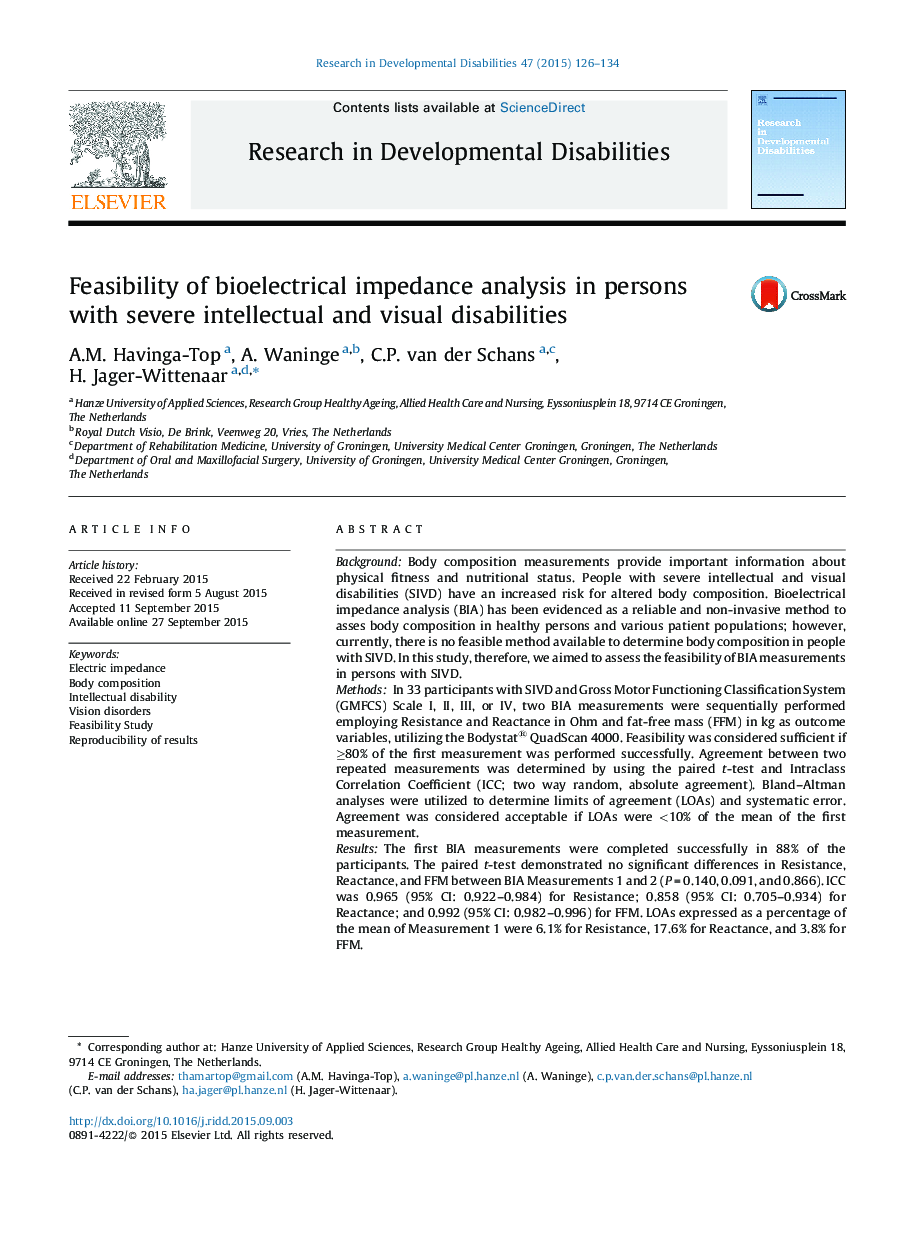| کد مقاله | کد نشریه | سال انتشار | مقاله انگلیسی | نسخه تمام متن |
|---|---|---|---|---|
| 371127 | 621898 | 2015 | 9 صفحه PDF | دانلود رایگان |
• We performed successful BIA measurements in 88% of the participants.
• We found no significant differences between two BIA measurements.
• Limits of agreement for Resistance and FFM were <10% of the mean of Measurement 1.
• BIA measurements seem to be feasible in persons with SIVD.
BackgroundBody composition measurements provide important information about physical fitness and nutritional status. People with severe intellectual and visual disabilities (SIVD) have an increased risk for altered body composition. Bioelectrical impedance analysis (BIA) has been evidenced as a reliable and non-invasive method to asses body composition in healthy persons and various patient populations; however, currently, there is no feasible method available to determine body composition in people with SIVD. In this study, therefore, we aimed to assess the feasibility of BIA measurements in persons with SIVD.MethodsIn 33 participants with SIVD and Gross Motor Functioning Classification System (GMFCS) Scale I, II, III, or IV, two BIA measurements were sequentially performed employing Resistance and Reactance in Ohm and fat-free mass (FFM) in kg as outcome variables, utilizing the Bodystat® QuadScan 4000. Feasibility was considered sufficient if ≥80% of the first measurement was performed successfully. Agreement between two repeated measurements was determined by using the paired t-test and Intraclass Correlation Coefficient (ICC; two way random, absolute agreement). Bland–Altman analyses were utilized to determine limits of agreement (LOAs) and systematic error. Agreement was considered acceptable if LOAs were <10% of the mean of the first measurement.ResultsThe first BIA measurements were completed successfully in 88% of the participants. The paired t-test demonstrated no significant differences in Resistance, Reactance, and FFM between BIA Measurements 1 and 2 (P = 0.140, 0.091, and 0.866). ICC was 0.965 (95% CI: 0.922–0.984) for Resistance; 0.858 (95% CI: 0.705–0.934) for Reactance; and 0.992 (95% CI: 0.982–0.996) for FFM. LOAs expressed as a percentage of the mean of Measurement 1 were 6.1% for Resistance, 17.6% for Reactance, and 3.8% for FFM.ConclusionsThe results of this study suggest that BIA measurements seem to be feasible in persons with SIVD. Although these results require confirmation in a more extensive sample of persons with SIVD, the findings of this study are an important first step in the assessment of applicability of BIA measurements for non-invasive monitoring of physical fitness and nutritional status of persons with SIVD.
Journal: Research in Developmental Disabilities - Volume 47, December 2015, Pages 126–134
